Can you believe that people have been making money off of riding a skateboard for more than half a century? Well, truth be told, they haven’t. There’s a lot more that goes into being a professional skateboarder than just skateboarding, but those peripheral job requirements have evolved with the industry and the society that consumes it. For an insider’s perspective, we had OG skate biographer Sean Mortimer ask OG skater Lance Mountain (who has pretty much been there since the beginning) about the changing definition of what it takes to make money off this silly little toy. Want to make it in the industry? Grab a pen and pad and take some notes…
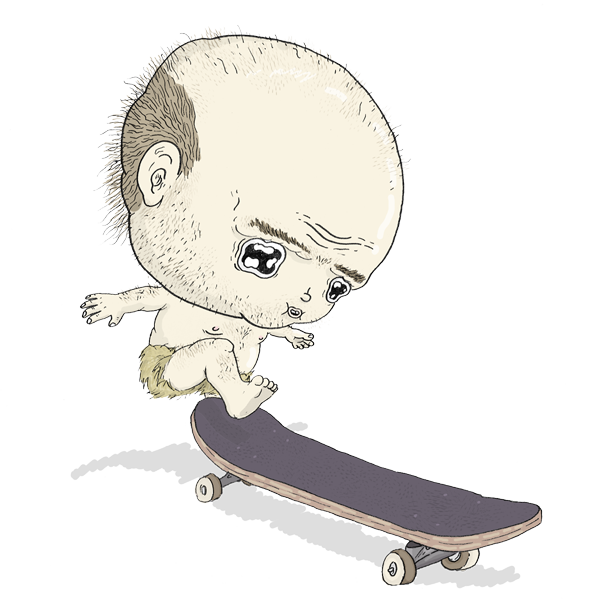
The Beginnings
In the 1960s, during skateboarding’s infancy, only famous surfers had their names on boards. Duke Kahanamoku had what we’d call a pro model. He was a legendary surfer and people knew his name, so they put it on a skateboard. All these skateboard companies that came from surfing started putting names on boards based on that person’s exposure in the surf world.
But Tom ‘Wally’ Inouye told me a story about how all that began to change with the rise of skateboard magazines. It was 1977, and he was skating at Concrete Wave skatepark. There really weren’t a lot of clearly defined pros with signature models. At this time, most of the names on the bottom of boards were of people like Tom Sims, company owners who started putting their names on all of their decks. So Wally was skating Concrete Wave and this photographer was shooting somebody else on the Sims team for a magazine. But they noticed this kid shredding the park and asked him to put on a Sims jersey for a skate photo. The picture ends up as a centerfold in SkateBoarder. Soon after, he was one of the most exposed skaters out there with multiple covers in a year. That became a pro’s job description right there: Get in a magazine with our stuff on and you’ll get paid. Wally got on Sims and began getting paid because of that photo. He said he kind of fluked into being pro, and once the pictures were published he got his first check from a photo incentive.
Now, there were a few pros out there with signature models like Stacy Peralta, Russ Howell, Jay Adams, and Henry Hester, but it was still pretty rare. Wally was getting as much or more coverage than many of the pros with their names on boards, so everybody assumed that it was time for a Tom “Wally” Inouye board. Sims made a couple of experimental boards for Wally, but when another company, Caster, came along and offered Wally a board, he jumped at the chance. So Wally goes to Caster, and his job description as an elite pro gets expanded from just getting coverage to also helping design decks. Skaters know better than anyone what they want from a deck, so they start working with the owner on shapes and layouts and thinner veneers and messing around with the degree of kick in a tail. It’s still very bare bones and not a lot of money for them, but I think Caster paid for a place for him to live. Also, most brands at the time were run by older surfers who still wanted to be connected to younger kids, so they brought in younger guys like Wally who could influence product design, get coverage, and also scout out other younger skaters to sponsor. A pro became a hybrid of athlete, designer, talent scout, and team manager for their sponsor.
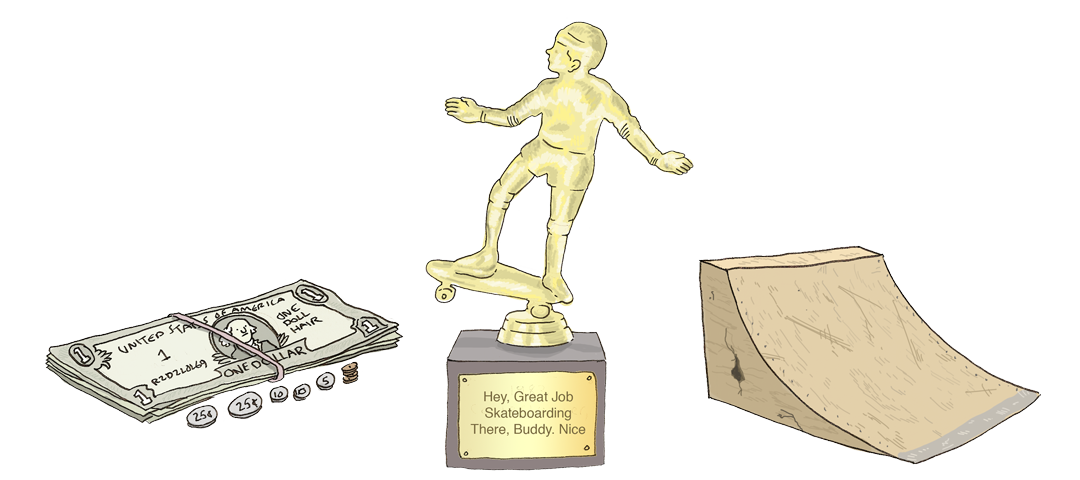
1980s
By the early 1980s the job description was simply to win contests, although I personally thought a good pro could compete in so many other ways. Doing well in contests was the unwritten rule behind most pro contracts in the 1980s, and the people who understood that were the ones who became successful. Some great pros didn’t want to play the game, and even though they were great, they faded. Companies paid people to win contests. Magazine coverage reinforced this since most coverage was based on who did a new trick at a contest and who placed well. It was rare that they went out and did a bigger feature on skateboarding that wasn’t somehow connected to a contest.
Variflex put me on the team because I had won some won amateur contests. But when they turned me pro in 1981, skateboarding wasn’t very popular. I was making maybe fifteen dollars a month from board sales. Tony Hawk had one month where he made eighty cents. Pros made money from board sales and contests and maybe demos. If you won a contest, you might make three hundred bucks. Do a demo and get fifty bucks. In the early 1980s, skating was in such a broke place that pros would do anything to make money. I did demos at Knott’s Berry Farm on a portable ramp for fifty bucks a day. I did a demo in a Ralph’s shopping market parking lot to draw attention to a new type of yogurt. Pros didn’t get paid by their truck or wheel or shoe sponsor.
Everybody was figuring it out. By the mid-1980s, demos became a grassroots way to spread skateboarding, and we eventually had it written into our Powell Peralta contracts that we would do 36 demos a year for them. We’d have to drive to Colorado, unpack a jump ramp, skate it and do street plants, and then pack it up. That Colorado one was in the snow, and then the shop owner didn’t want to pay us because all the kids got cold and went into the shop and stole stuff. The owner said the demo didn’t work out for him so why should he pay us? You didn’t even know what obstacles were going to be at a demo, so you had to be able to skate everything. You might show up to a shop in Yuma, Arizona where the temperature was 102 degrees and it melted the fresh asphalt. We’d fly off a jump ramp and just stop on landing. Our wheels would sink in about an inch-and-a-half, you couldn’t even roll. And we’d sign autographs a lot, sometimes for hours after a demo. There was a lot of autograph signing, but in the 1990s, you didn’t sign any autographs.
Once someone does something that remotely works in the skate industry, everyone follows. That’s what happened after Stacy Peralta made the first skateboard video in 1984, which opened up another job description for the professional. Videos started to play a big part in a pro’s job for the first time. I was still a pro in 1984, but when I got on Powell Peralta, the deal was that I wasn’t going to have a pro model anymore. But I rode in that first video, which made people ask for my board, so Powell made some with my name on it. Soon, skaters like Frankie Hill were turning pro strictly from video parts. For the first time, you didn’t have to be a great contest skater or a demo skater, you just had to film an impressive part. A lot of the older guys didn’t understand this and thought that some of the pros who turned pro from video parts had it easy. A whole generation of pros had issues with this because it became harder to find a place using the older business model. By 1990 a pro’s job was simply to film a progressive street part.
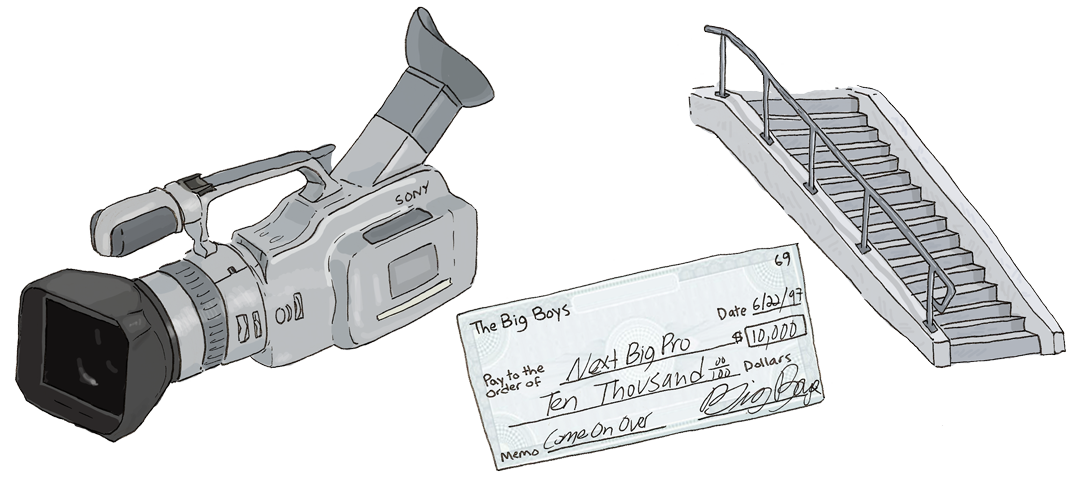
1990s
In the 1990s, contests didn’t matter anymore. It was all about capturing insane progression and shooting something that hadn’t been done. The magazines even stopped running sequences because they’d burn though so much expensive film trying to get the make, so they’d just video it and then print frame grabs. Anything that was not progressive was not accepted as legitimate professional skateboarding. There were articles about how pros that weren’t doing cutting edge tricks should stop being pro. Nobody was interested in pro vert skateboarding. Kids who wanted to sit on thier butt and go down a hill or dork around didn’t relate to that aggressively progressive attitude that was so popular, so a lot of them just ended up quitting skateboarding.
By this time the technical definition of a pro skater became really diluted. If a pro is somebody who makes money from skateboarding, then let’s be honest, all amateurs from this point on have technically been pros. From the 1970s until the 1990s, if you were entered in an amateur contest and they found out that you had made money at a demo, they’d force you to turn pro. But those rules didn’t exist for videos, and by the early 1990s, teams were giving amateurs cars and shopping sprees and checks to steal them from other companies and to get them in their videos.
There was a divide between pros who could skate well live, and pros who spent a lot of time getting that one progressive trick on video. There were pros doing never been done tricks on video who weren’t capable of going to a demo and skating consistently. Sometimes they were so progressive that they weren’t that good at tricks they used to do because they focused so much on innovation.
On the flip side, there were pros who were fantastic live, but just weren’t very progressive. The bottom line at that time was whoever did either of those jobs well survived. Some of the pros from then, like Ed Templeton and Mike Vallely that are still thriving today, are doing so because they did their job so well back then. Ed Templeton and Mike Vallely won some contests, toured and did such good demos that that is one of the reasons they remain known pros.
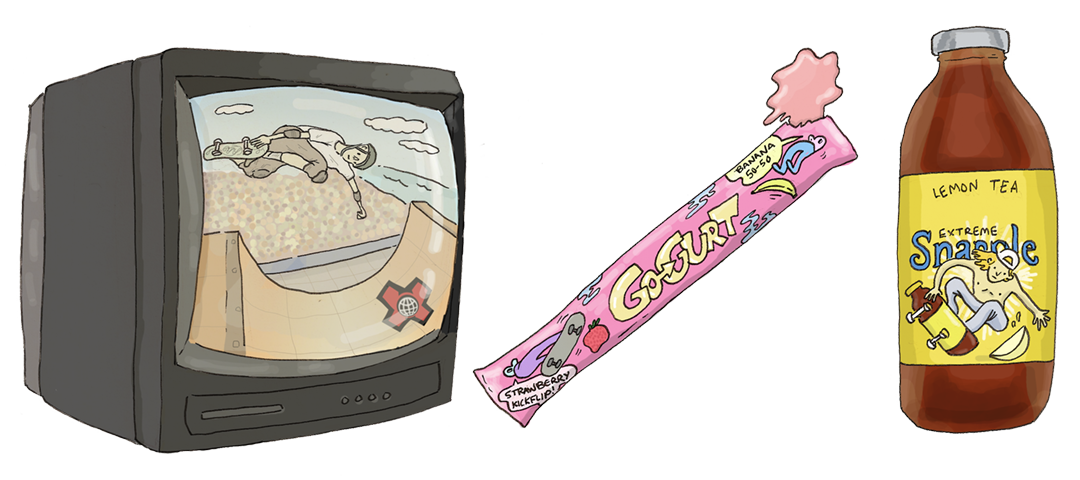
The 2000s
A pro’s livelihood shifted in the 2000s because of the money now being made from corporate clothing and skate shoe sponsorships. The X-Games were getting mass exposure, and pros started to get attention and sponsorship by non-endemic brands. It really diversified how a pro got paid. A totally new description came out of this time, and that was that whatever a major sponsor wanted you to do became your job description. For some pros to have successful careers, their job description might be to wear a branded hat or lift up a branded beverage immediately after their run. There were pros that didn’t have a board sponsor, but were making quite a bit of money from an energy drink sponsor.
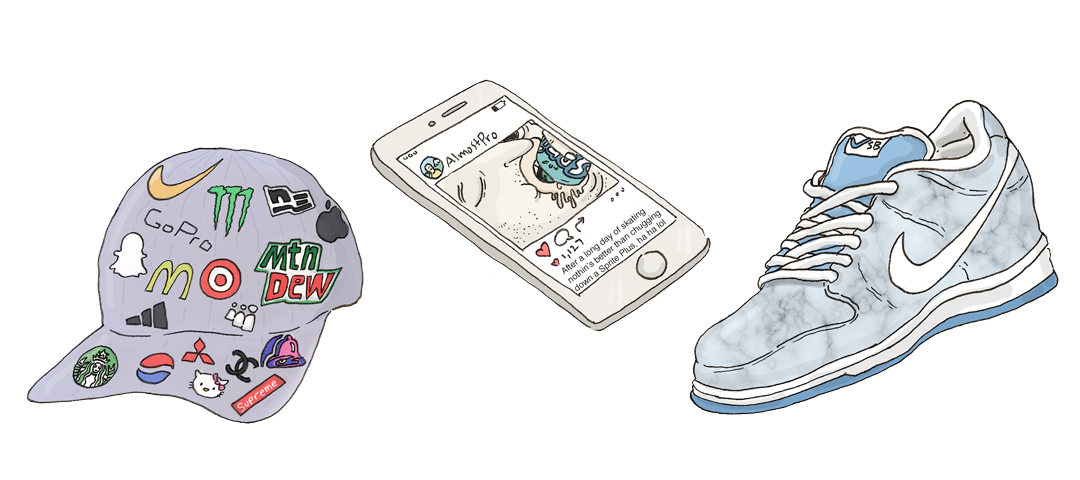
The 2010s
Things have changed a lot in 50 years. Now board sponsors think about a skater’s shoe and other major sponsors before they pick him up because these sponsors will pay so much of his expenses for exposure. A pro’s relationship with his sponsors (and what sponsors he has) has totally evolved. I don’t think skateboarding as a whole accepted this relationship as one of the standards until Paul Rodriguez came along. Paul worked at being a professional who was seen as legitimate to real skateboarders and also attractive to corporate sponsors. Before that, core street skaters did not accept pros accepted by the corporate world. Paul broke that mold, and then other pros wanted what he had achieved. Now there’s a whole new generation that think his way is the best example of a successful pro career. Most of them have agents to talk to corporate sponsors about endorsements. It’s all about endorsements now.
Social media also plays a huge part now. A lot of pro contracts include stipulations about how a pro will use his social media to promote that sponsor. There are brands that look at the skater’s social media presence before they even think about sponsoring him. They don’t know how to look at actual skating. As a skater, we know when we look at a skater we like that it’s good, but companies and business don’t know how to make that call. It’s the same with the agents. A lot of outside agencies think they’ve molded and sculpted skaters into a more effective tool for sponsorship. These agents have changed things, but at the end of the day, a pro’s job description has never changed: it’s to be progressive and inspire and cause other people to fall in love with skateboarding. All those other benefits come from that ability, even if they don’t completely understand that’s how it happens.
It’s a good time to be a pro right now. There has never been as many opportunities to make a living skateboarding, but who knows if it’ll continue to have the same growth or have a weird little readjustment? The argument of what makes a good pro is out in the open for everybody to comment on and it’s unlike any other time in skateboarding’s history. Some of the best pros in the world get picked apart on social media. We’ve been talking about the job description of pros, but finding ways to separate yourself from the pack on and off your board is the job description of an excellent pro. The real, memorable and outstanding pros have always changed somebody’s idea and feelings, and in doing that changed the direction of skateboarding.
Related Posts
Comments
Popular
-
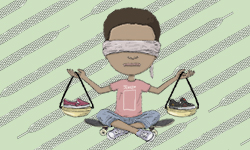 WHAT WOULD MAKE SKATERS DITCH THE BIG SHOE BRANDS?
WHAT WOULD MAKE SKATERS DITCH THE BIG SHOE BRANDS?
We asked younger skaters how small shoe brands could win back their business from the big budget behemoths.
-
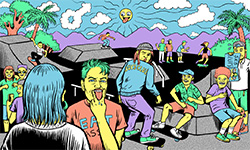 MY EXPERIENCES IN SKATEBOARDING
MY EXPERIENCES IN SKATEBOARDING
"I've been terrified of garnering the reputation of 'ramp-tramp' or 'pro-ho' just from spending time with skaters."
-
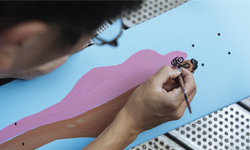 MEET UNITY, SKATEBOARDING’S MOST PROGRESSIVE CREW
MEET UNITY, SKATEBOARDING’S MOST PROGRESSIVE CREW
"Never has my gay life intersected with my skateboarding life. If anything, maybe I’d worked to pull them apart."
-
 WHAT HAPPENED TO GERSHON MOSLEY?
WHAT HAPPENED TO GERSHON MOSLEY?
From punching Andrew Reynolds, to not getting "pimped" by the industry, Gershon covers everything you wanted to know.
-
 HOW CAN WE HELP KEEP SKATE SHOPS ALIVE?
HOW CAN WE HELP KEEP SKATE SHOPS ALIVE?
For years brands and skaters have blindly cried "support your local," but we asked shop owners about other ways we can all provide actual help.

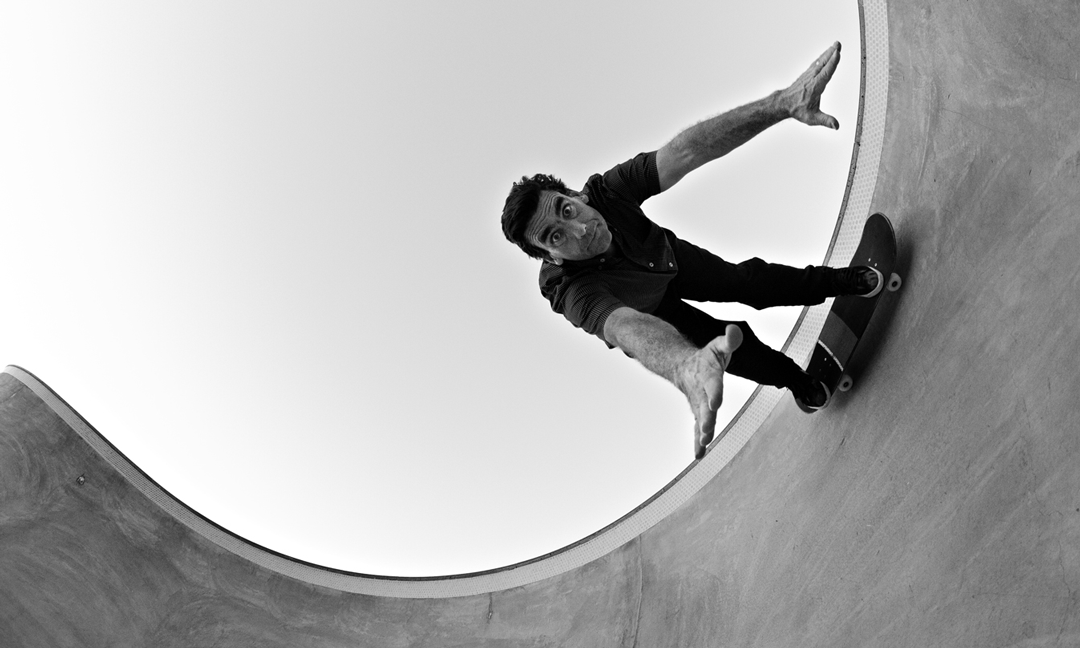

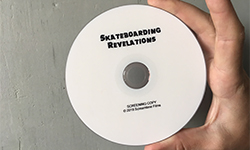
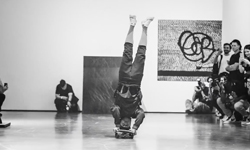
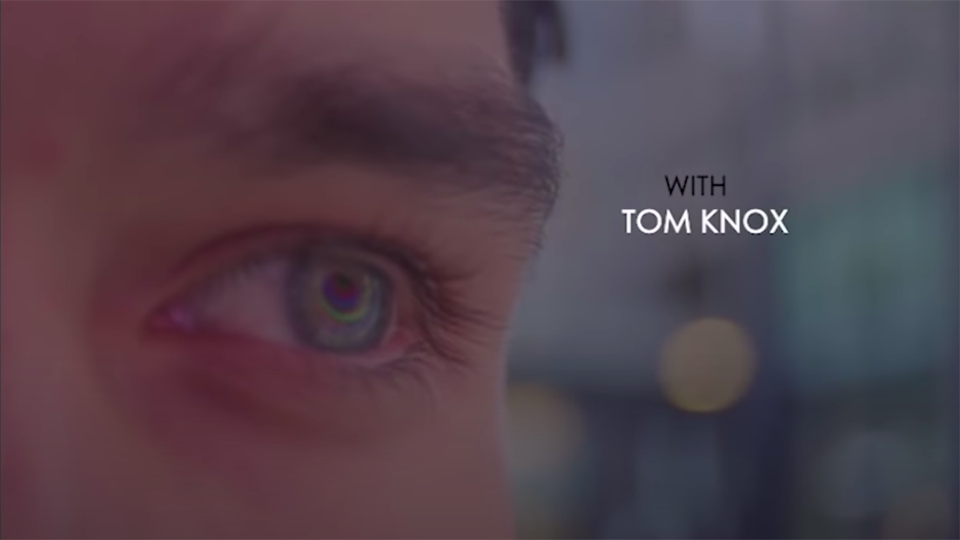
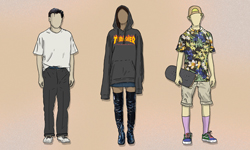
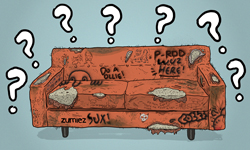
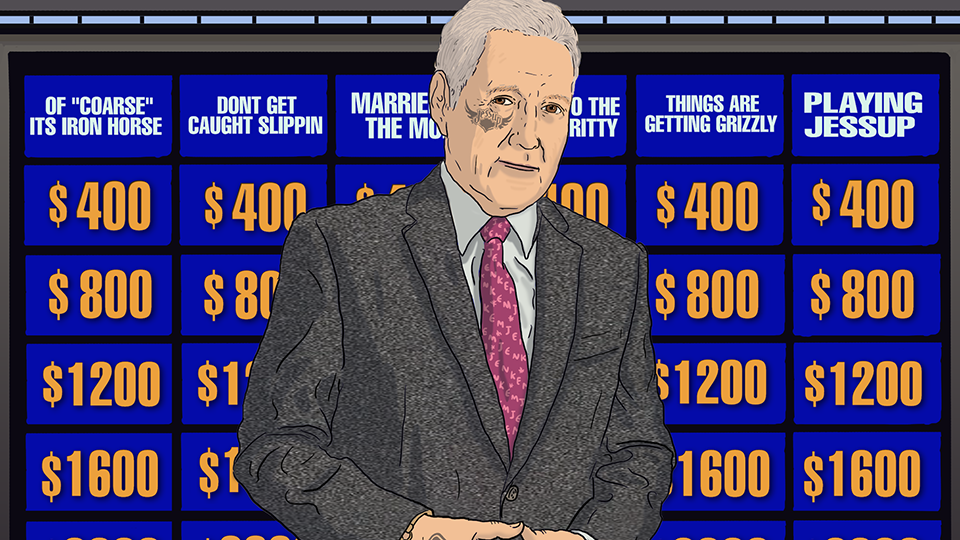

January 7, 2016 1:15 pm
Thanks for the history, Lance! Most was from the perspective of who was paying the skaters… but the flip side is: what is selling, and to whom. Is it skate goods, fashion, TV time (ads), energy drinks, shoes, videos, live events, etc. And to skaters, to parents, to youth, what’s the demographic? From this, many explanations follow. For instance, consider Vanessa Torres laments concerning Leticia Bufoni. What is being sold, and to whom? It may be that trying to sell boards branded for girls is a very tiny market, compared to corporate advertisers vying for some hip athlete/model story for mass exposure. Or take vert skaters. Having a board sponsor and video parts seems very secondary to getting enough contest exposure for the energy drink sponsor, again because there just aren’t that many kids buying their favourite vert pro’s board, but plenty of people overpaying for a sugar/caffeine mix that is deemed cool by association with extreme hat dudes. A side hobby like car racing, motocross, MMA, or music doesn’t hurt the cause either. I’m not judging, it is just what works. Lastly, there remains a difference between being a really really great skater and being a more unique marketable good skater, which seems to drive a lot of people crazy too.
January 16, 2016 7:52 am
Mountain… More like Lance Anthill.
January 17, 2016 11:00 pm
Great article, we need more like this. I felt it could’ve been twice as long, at least. The 90’s were probably the most important decade on skateboarding, it broke the mold from the contest/vert/big name pro hegemony and brought out legions of street skaters from outside California, skating underwent so many changes and had basically sorted itself out by the end of the decade. Sure it’s pretty lame that corporate aponsors have taken over the whole fuckin industry, but at the same time these kids are not only amazingly talented and so far beyond the skills of Their predecessors, they’re breaking themselves off far worse than any her pro sport m. They deserve the money and with social media, you got hometown heroes and smaller brand heads getting lots of shine.
February 3, 2016 8:32 pm
Take what I have to say with a grain of salt as there was a 19 year period when I did not skate at all, and I will be 41 in a few days.
Professional skateboarding is becoming more of a cottage industry where personality, charisma (or the opposite: rebel appeal) and catering to specific skateboarding niche demographics will become increasingly important. Sure, there will always be a few freak-of-nature skaters that somehow transcend and appeal to all skateboarding demographics, but the old one-size-fits-all pro and skateboard brand is dying (or long dead). The primary reasons for the switch from the Powell Peralta model to guys selling boards out of their trunk and at a few local skate shops or direct ala Youtube (ie. Revenge) is exposure, the decentralization of skateboarding media, lower barriers of production, easy direct marketing and disintermediation in general. In the old days (my old days of the 80’s at least), pro skateboarding was portrayed through 2 or 3 magazines (Thrasher, Transworld and maybe Poweredge) or the latest hot video. Magazines were mostly in-bed promotional tools of the large manufacturers. Most videos portrayed outdated and stale or cheesy footage, so only the most progressive videos like Hokus Pokus were watched more than once or, as was so often the case, watched every day. Perhaps the kid skating in Nebraska back in the day went to a local demo with advanced skating or went to visit a relative in a different state with an important ramp or progressive scene, but most skateboarders’ exposure primarily remained videos and magazines and trying to figure what it was all about with a few friends. Videos and magazines by their nature as the primary form of transmission will emphasize certain pros, styles, trends and, of course brands, over others. The idea was to appeal to the most eyeballs and then sell the most boards (or magazines). The 90’s ushered in new brands and new pros and a revolt against the cheesy and detached commercialism of the big 80’s brands, but the model was the same. Magazines and videos joined at the hip with the big brands were trying to sell skateboarding to the broadest skate demographics available and make the most bucks (WI Wet Willy anyone?). A few big pros were needed at the time to sell pro skateboarding and were well-paid for the time. It should also be noted that during this time the skill gap in skateboarding was much more profound than the recent era and more easily supported a cadre of “pro skateboarders.” Now, there must be tens of thousands rippers worldwide. Easier access to terrain and video streams make it easier to learn v. pockets of great terrain and a progressive scene. That kid in Nebraska might have a son that would have been a top 80’s pro if there was a time machine, but he will never make a dime off skateboarding.
The internet and Youtube in particular killed everything for the big skateboard pro of yesteryear. Skateboarding is over-exposed. Some dude can start a tube, get 100,000 followers and sell a gazillion boards directly to a dweeb demographic while the established one-size-fits-all brands marketing coolness and cultural authenticity struggle to sell their over-priced boards to kooks through middlemen skate shops relying on a business model of immediate convenience and a cool guy vibe. The censorship overlords (magazines and the videos they produce) have lost their tooth in determining what skateboarding is and maybe even what is cool. Perhaps this is why Thrasher has become more extreme over the years as they (the private equity masters) see that they too must embrace a specific subset of the community (with the ever present and escalating shock value to sell product to tweens, young teenagers and dumbasses) and throw stones at the rest.
The future of skateboarding pros and big skateboard brands isn’t Rob Dyrdek and Alien Workshop. The future is guys selling out of their trunk or marketing skateboarding trends for a hot moment to non-skaters (ala DC shoes 15 years ago, Zoo York 10 years ago, Rogue Status 5 years ago, etc.). Anybody with a few thousand bucks and a few hundred followers can start a board or clothing brand and open a website. These people might make it for awhile too. Any dude with a GoPro can start a tube. The big overhead companies and their company pros are the ones in trouble.
It will also be interesting to see if skateboarding in general becomes less marketable to non-skaters as every non-skater has already seen high quality skating and it is over-exposed. Will new manufacturing (3D printing for example) kill the last holdout money makers of big brands: trucks, wheels, bearings, accessories and even clothing? Perhaps in 15 years only “tour pros” will make big money (for a shorter period due to the competition and skill level required of performing the circus tricks) while a bunch of people make a few bucks with their own brand and a few continue to make a quick score selling a fast trend to non-skaters. The only big brands that would survive such a scenario would be selling proprietary technology not easily manufactured (ie. tech decks) or stuff with higher barriers to entry like shoes (but perhaps technology in manufacturing will negate that barrier as well).
BTW Lance, you rock!